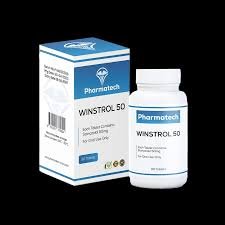The Role of Nicotinamide Adenine Dinucleotide in Cellular Energy Production
Amidst the multitude of molecules that facilitate the bustling energy economy of our cells, one compound stands out for its central role: nicotinamide adenine dinucleotide (NAD). This crucial coenzyme is involved in numerous biochemical processes, particularly those that convert food into the energy vital for every cell. NAD is also increasingly recognized for its significance in the regulation of aging and the maintenance of cellular health. As we delve into the intricacies of cellular energy production, an understanding of NAD becomes indispensable. In this article, we will explore the diverse and dynamic roles of NAD in cellular function.
Understanding Nicotinamide Adenine Dinucleotide (NAD) and Its Vital Functions

Nicotinamide adenine dinucleotide (NAD) is vital for cellular metabolism, acting as an electron carrier essential for ATP production. It exists in two forms: NAD+ and NADH, with NAD+ accepting electrons and NADH temporarily holding them. This electron transfer is crucial for energy production in mitochondria.
NAD also serves as a substrate for enzymes like sirtuins, which regulate metabolism and DNA repair. These enzymes rely on NAD for their function, linking NAD availability to cellular health. NAD influences cell signaling and gene expression, affecting how cells respond to energy changes and repair damage. Maintaining a balance between NAD+ and NADH is essential for cellular stability and adaptation to stressors.
The Metabolic Pathways: How NAD Contributes to Energy Production
NAD+ is a pivotal player in cellular metabolism, notably in glycolysis, where it accepts electrons to convert pyruvate, and in the Krebs Cycle, where it aids in releasing energy from various nutrients. Through oxidative phosphorylation, NADH contributes electrons to the electron transport chain, generating ATP while regenerating NAD+. This continuous cycle sustains cellular energy production.
Beyond energy conversion, NAD+ has roles in adaptive thermogenesis, helping generate heat in response to cold, and may influence mitochondrial function, impacting energy production and metabolic conditions. Manipulating NAD+ levels shows promise in altering these processes.
NAD+: More Than Just Energy, A Key Player in Cell Health and Longevity
NAD+ is not just about energy metabolism; it’s a key player in cell health and potential lifespan extension. Sirtuins, NAD+-dependent enzymes, regulate crucial pathways protecting against age-related decline, such as DNA repair, inflammation, and mitochondrial efficiency. Another vital role of NAD+ is activating PARPs, which repair damaged DNA. As cells age or face stress, the need for efficient DNA repair increases, directly influenced by NAD+ availability.
Caloric restriction, known for extending lifespan, correlates with increased NAD+ levels and enzyme activity. This suggests a link between diet, NAD+, and longevity, sparking research into mimicking caloric restriction’s effects through NAD+ enhancement. NAD+ interacts with signaling molecules during cellular stress responses. Adequate NAD+ levels are crucial for cell resilience and longevity, impacting whether cells survive, adapt, or succumb to challenges like oxidative stress or energy deficit.
Boosting NAD Levels: Potential Benefits for Metabolic Disorders and Aging

Researchers propose that boosting NAD+ levels could improve metabolic health and extend lifespans, combating age-related decline. Supplements like nicotinamide riboside and nicotinamide mononucleotide can raise NAD+ concentrations, potentially reversing aging signs and improving metabolic profiles. For those with metabolic disorders like obesity and type 2 diabetes, increasing NAD+ might enhance mitochondrial function, reduce oxidative stress, and boost insulin sensitivity, offering novel therapeutic strategies pending further clinical trials.
Natural methods such as exercise and fasting can also elevate NAD+ levels by triggering physiological responses that activate enzymes like sirtuins. Lifestyle adjustments could thus complement supplementation, potentially protecting against age-related decline. Ongoing research into how NAD+ influences cellular function and aging is expanding possibilities for metabolic recovery and improving quality of life in aging—with NAD+ augmentation at the forefront.
Advancements in NAD Research: Implications for Future Therapies and Wellness
Scientific advancements in NAD+ research are uncovering its profound impact on human health, including metabolism, DNA repair, and aging. These discoveries offer promise for innovative therapies across various diseases and disorders.
In neurodegenerative diseases like Alzheimer’s and Parkinson’s, boosting NAD+ levels shows potential for protecting neurons from stress and dysfunction, suggesting it could be part of future treatment strategies.
NAD+’s influence on immune responses opens new avenues for addressing autoimmune diseases and chronic inflammation. Understanding its role in immune cell function could lead to targeted therapies.
The intersection of NAD+ research and personalized medicine holds promise for tailoring interventions to individual metabolic needs, potentially optimizing health outcomes with precision.
Overall, the potential of nicotinamide adenine dinucleotide in transforming our approach to health and disease cannot be overstated. As research continues, the practical applications of enhancing NAD+ levels could extend far into the realms of clinical practice and personal wellness, offering new hope for combating age-related diseases and promoting longevity.




